Today we bring you the second article in this mini-series about 3D scanning. On this occasion we are going to talk about a technique that will allow us to scan 3D objects using structured light with different patterns. Many of the 3D scanners we can buy today work with this technology so keep reading to find out how it works and what you can use it for.
What is structured light?
3D scanning using structured light is conceptually very simple. The steps involved in obtaining the scanned model are:
- The object is placed on a surface with uniform and dim lighting or in total darkness.
- An image composed of structured patterns, such as grids, points, geometric figures, etc. is projected on the object. This projected pattern is not arbitrary, it is a known pattern.
- The pattern is observed and photographed as it is projected onto the figure. Straight lines, for example, will appear deformed due to the geometry of the object.
- By analyzing the deformation of the pattern, which is a known pattern, it is possible to reconstruct the surface on which the image has been projected
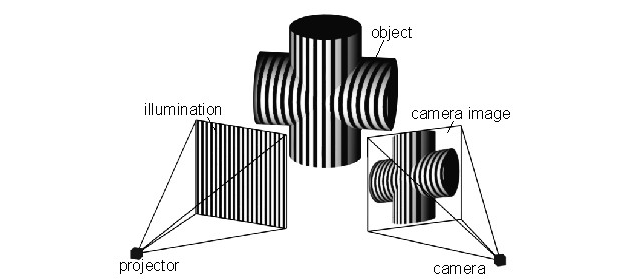
Applications for structured light 3D scanning
3D scanning using structured light has many advantages over photogrammetry, which we discussed in this article. One of the disadvantages of the structured light is that scanners that use this technology are usually expensive equipment that can cost thousands of euros.
Among the advantages, we find that they are designed to require little or no experience to get optimal results, contrary to photogrammetry where the experience in taking the pictures and handling the software is crucial.
Since 3D scanning using structured light is a technique that does require an initial investment, it is important to evaluate the possible applications of this technology. Some of these applications are common to 3D scanning technology in general, but the use of structured light equipment as it works quickly and without requiring experience has its own use cases. Below we will show you some of them.
Advantages and disadvantages of Structured light vs. Photogrammetry
Structured light
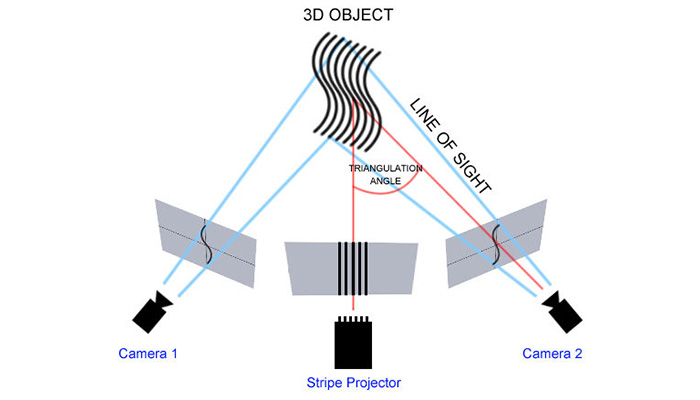
✅ Precision
✅ Fast Scanning
✅ Quicker computer processing
❌ Requires buying a scanner
Photogrammetry
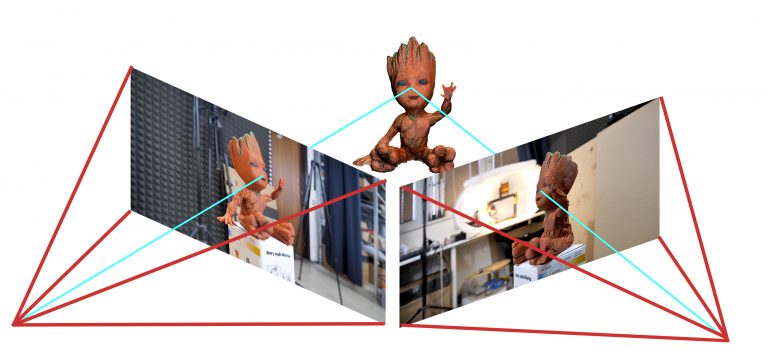
✅ Cost (doesn’t require a scanner but a camera)
✅ Captures textures better
❌ Requires a more powerful computer for postprocessing
Reverse Engineering
If your company is dedicated to producing or designing parts, you can be sure that part of the work cycle consists of reverse engineering existing parts.
A very convenient way to speed up this process is through 3D scanning, as we can scan an existing part for further analysis in CAD software or even reproduce and edit it in a much more direct way.
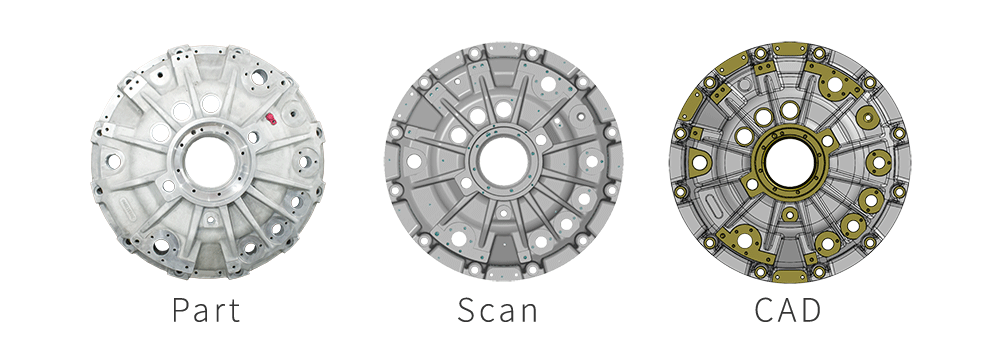
This will save you time and consequently costs by greatly streamlining the time spent on reverse engineering.
Measurement and structural analysis
Maybe you’ve thought about it, but 3D scanning is a great way to get a part’s measurements quickly and easily. The complex geometry of some parts makes it very difficult to obtain certain measurements with traditional instruments such as a caliper or a ruler. Think of 3D scanning as a laser tape measure that takes all the measurements of the part at once. Sounds good, doesn’t it?
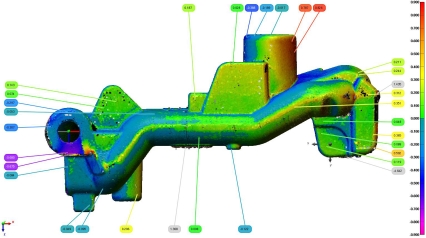
On the other hand, by having a three-dimensional copy of our part, we will be able to analyze it in specific programs to optimize its geometry, saving material costs and manufacturing time and also improving the mechanical properties of the part.
Quality control
Think about the production line in your workshop. You will probably produce many parts in a short period of time, and analyzing them one by one to verify their quality would be a very costly task in terms of time and resources.
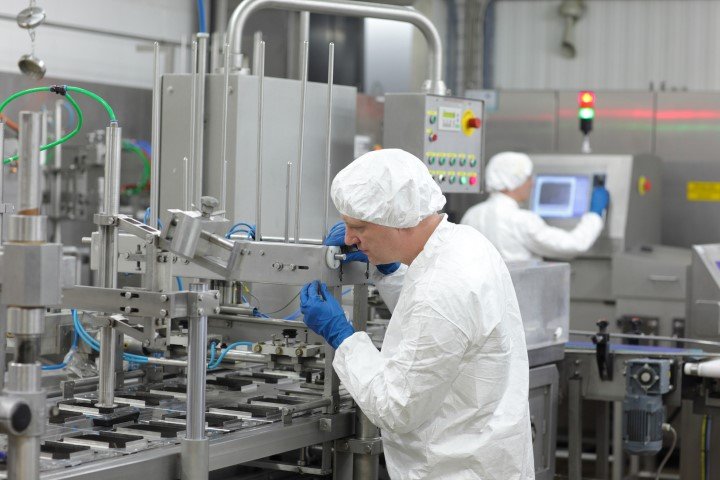
In many cases a 3D structured light scanner can take three-dimensional “snapshots” of the objects we produce and compare them with the ideal 3D model to quickly detect differences and possible faults.
This way you can take quality control of your products to the next level by automatically analyzing each part.
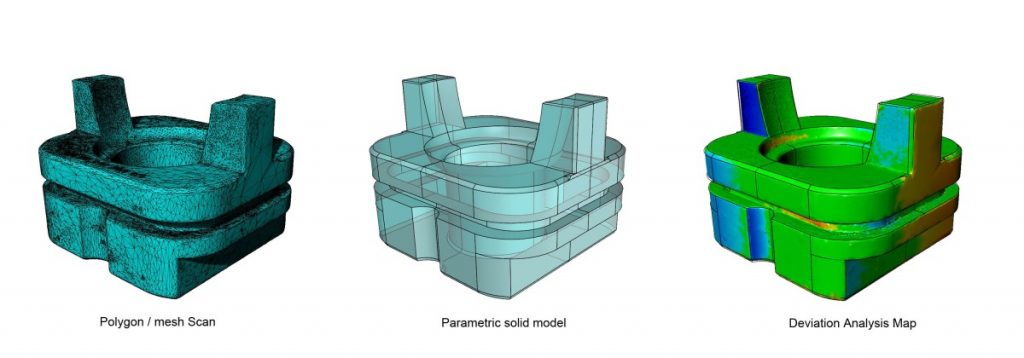
Scanning of busts or people
Scanning people in 3D can have many applications. There are already many companies that manufacture and sell small copies of ourselves, scanning the person first and then printing them in 3D.
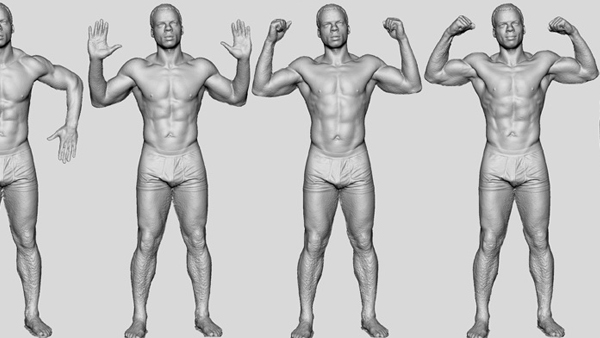
The advantages of 3D scanning using structured light are clear here:
- No great experience required: Most 3D structured light scanning equipment is very easy to use, so a person without great technical knowledge will know how to scan without major problems.
- It’s fast: Unlike photogrammetry, it does not require us to take hundreds of pictures of the same object from different perspectives. This is especially important when photographing people or living beings in general, as it would be very complicated for a person to maintain the exact same posture for a long time.
- It is more accurate and with a higher resolution than other methods such as time of flight 3D scanning, so we can capture very fine details of the person.
Once we scan our client we can print a copy in our own 3D printers or order it to a professional 3D printing service such as Bitfab, where we have many 3D printing machines of different technologies.
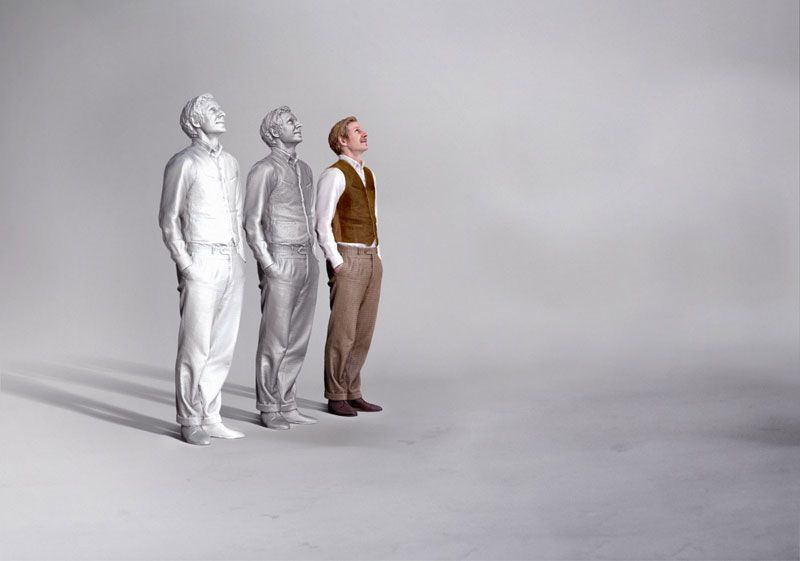
Another less known application is the manufacture of custom-made clothing, since through a 3D scan we can obtain exact and very precise measurements of all parts of the person’s body. This technology is currently being used, for example, for the manufacture of high-performance sports shoes, adapted to the person’s foot to the millimeter.
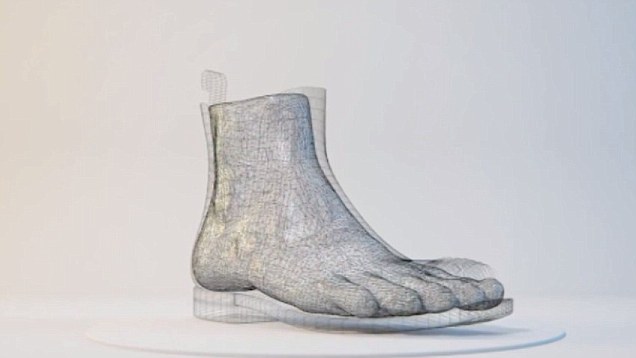
This is not something new, as it has been done in a traditional way for a long time using moulds taken from the person. As you can imagine a 3D scan of the foot is something much faster and less invasive than casting or silicone.
Conclusions
We have shown you what 3D scanning technology using structured light is and you saw some of its advantages over other 3D scanning techniques, although we will talk about this in a future article.
You have also seen some of the possible applications, which include:
- 3D scanning of people for the manufacture of miniatures or custom clothing
- Measurement and structural analysis of your parts
- Reverse engineering to streamline your design and production cycle
- Automatic quality control
As you can see, there is no shortage of applications that structured light 3D scanning can cover, thanks to its ease of use, accuracy and scanning speed. If you have any questions, don’t hesitate to contact us, we’ll be happy to help!
